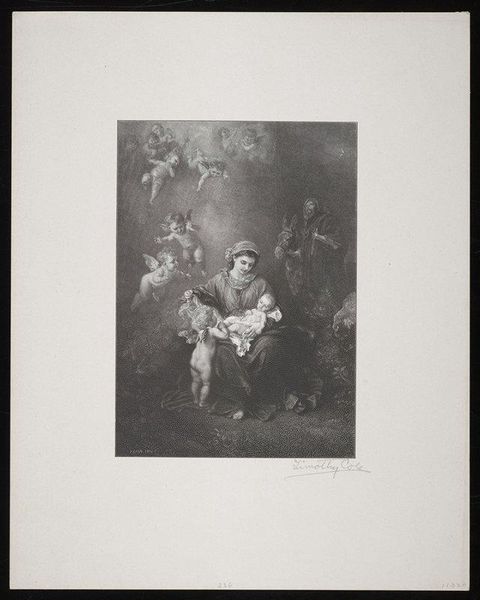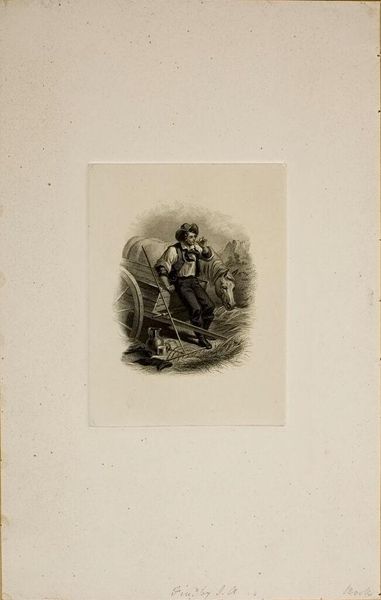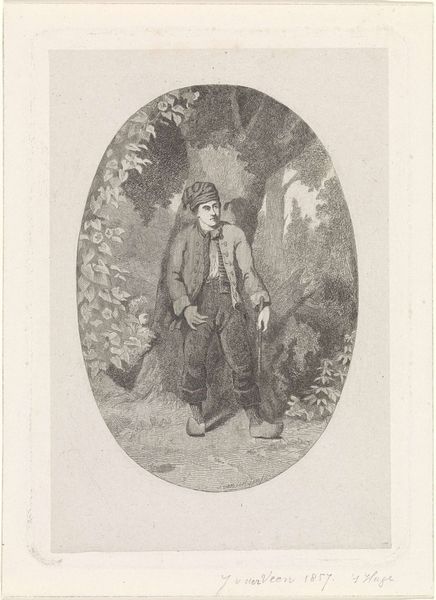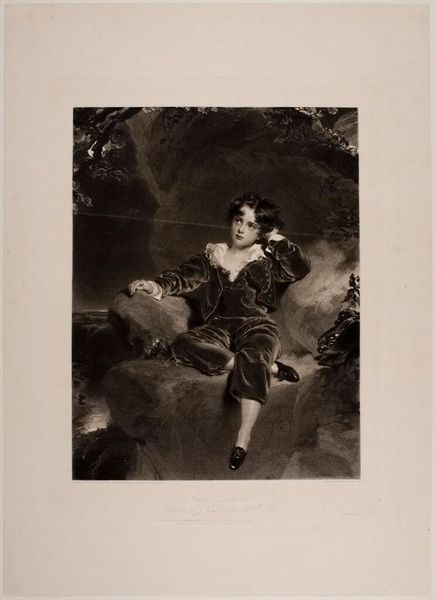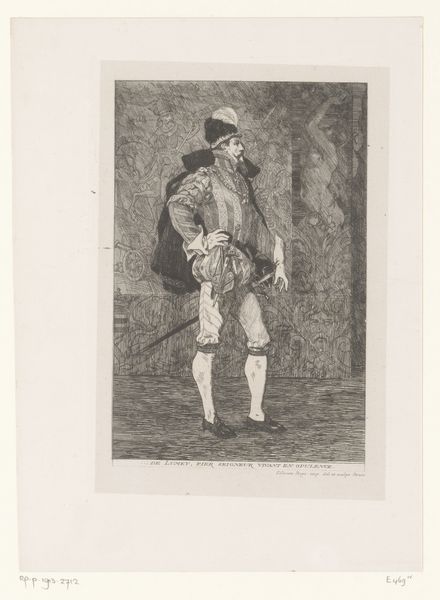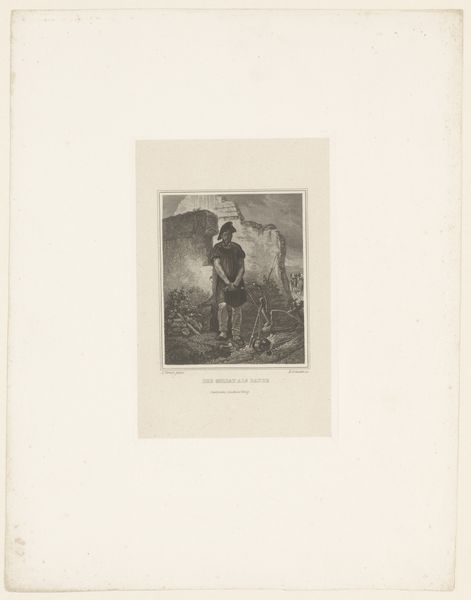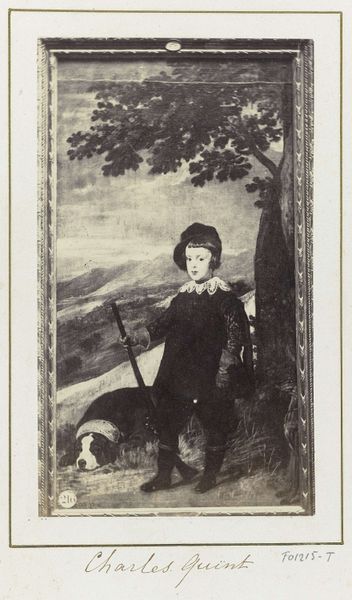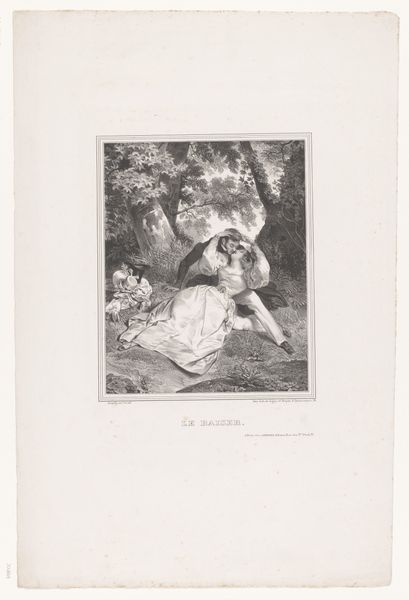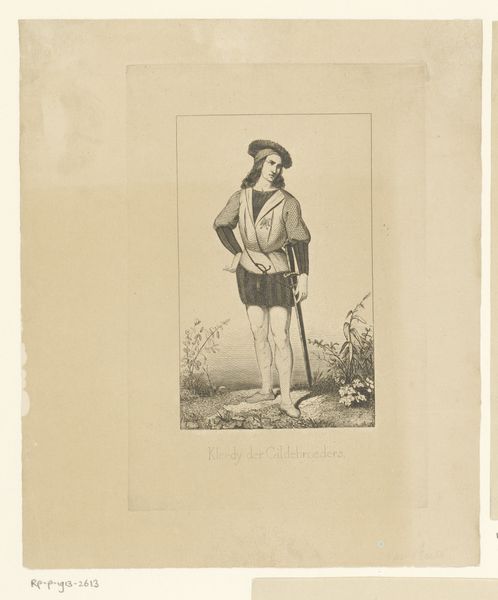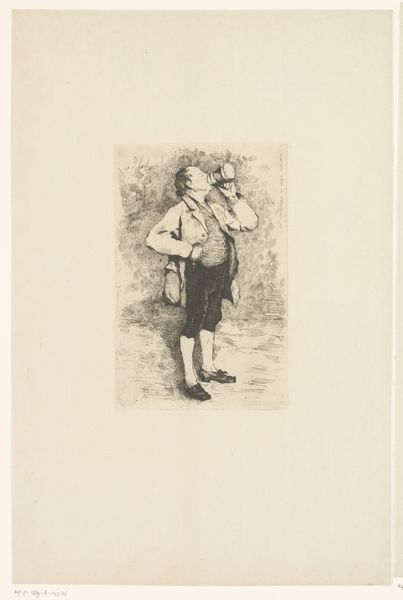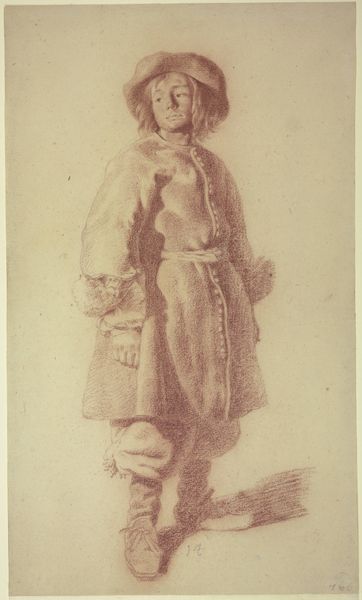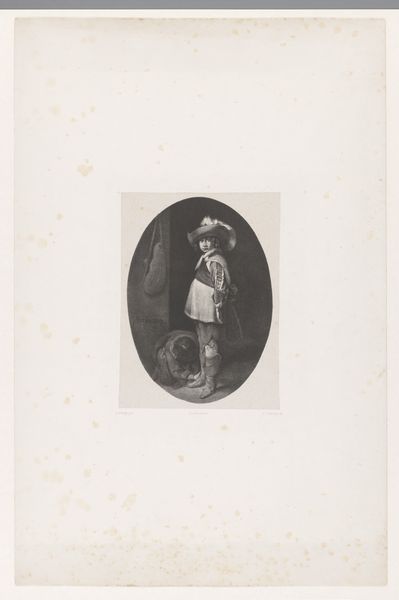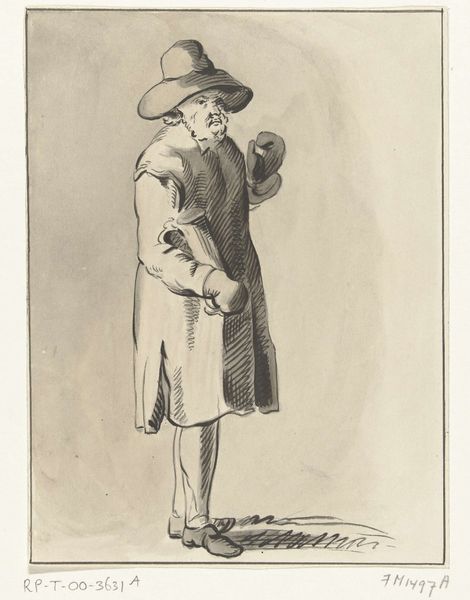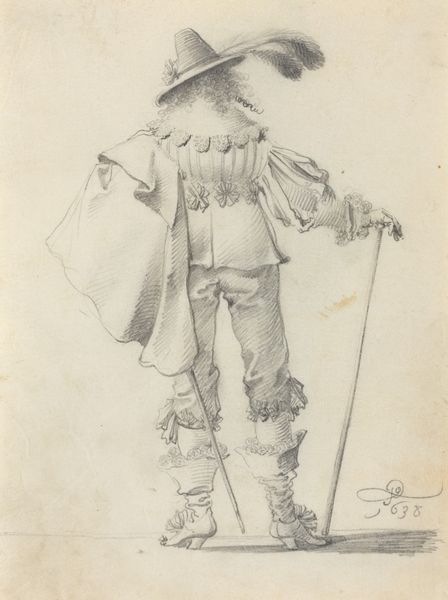
drawing, print, engraving
#
portrait
#
drawing
# print
#
old engraving style
#
figuration
#
history-painting
#
engraving
Dimensions: height 247 mm, width 153 mm
Copyright: Rijks Museum: Open Domain
Curator: This print from the 19th century is titled "Portret van Willem II, prins van Oranje," housed right here in the Rijksmuseum. The original artist remains anonymous. Editor: The first thing that strikes me is how meticulously detailed it is for an engraving. There's a remarkable texture created by those lines. It almost has the feel of a photograph despite the medium. Curator: It offers a glimpse into the very constructed nature of royal portraiture, and, consequently, power. Observe how the child-prince is positioned within a backdrop that seeks to connect him to both nature and an inherited authority. This carefully designed setting underscores how rulers are formed. It subtly hints at the performative expectations attached to gender roles. He stands rigid but vulnerable in garb suggesting status. Editor: I'm curious about the act of making the print itself. Imagine the engraver, meticulously carving lines into a metal plate, translating the image bit by bit, hour after hour. I wonder what materials were used for the inks. And what was the printer's shop like where they produced each print of "Portret van Willem II, prins van Oranje?” It makes me consider this artwork beyond merely a likeness and consider its manufacturing. The paper, the tools, the skill involved, not to mention the system of labor. Curator: Absolutely. Consider the way he grips what I assume to be a swagger stick – a tangible object denoting control – versus the implied and theoretical power conferred by this regal garb. It forces questions about whether he commands objects or whether he himself is made, even subjugated, by the sum total of all material realities—the clothing, position, even the very landscape that serves only to support him and underscore status. What we witness transcends simply a portrait; it acts almost as an exploration into constructions and deconstructions around male identity in power. Editor: Agreed. This print reveals as much about artistic creation and the world of commodities as it does about the individual. The labor behind creating this impression is a testament in itself. Curator: So, perhaps this artwork isn't simply a representation but a lens—allowing us to explore issues of power, gender, labor, and materiality. Editor: I appreciate this perspective. It compels me to contemplate just how much craftsmanship and resources converged in 19th-century Europe so that such art could take shape at all.
Comments
No comments
Be the first to comment and join the conversation on the ultimate creative platform.
